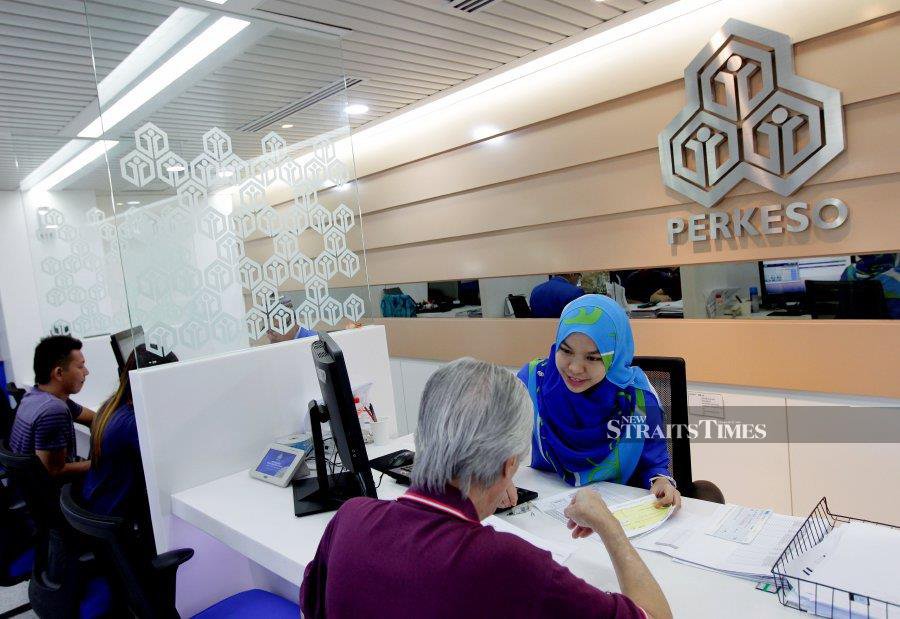
KUALA LUMPUR: Employers will face a tougher time if the government's plan to establish a safety net for private sector workers via the Social Security Organisation (Perkeso) comes to pass.
Economists say that the introduction of the proposal could lead to a backlash from unhappy contributors who may need to stretch their limited paycheck.
Universiti Kuala Lumpur's Business School economic analyst Associate Professor Aimi Zulhazmi Abdul Rashid said the introduction of the scheme could result in more worries for the lower-income groups, as more deductions could be enforced.
"The idea to make Perkeso contributions beyond its protection age of 60 is a good effort. However, it will certainly be an additional overhead cost to employers and put them in a tougher situation on the back of a recovering economy if it is extended similarly to the Employees Provident Fund (EPF).
"Perkeso coverage stops when employees retire. If we are going to increase the employer-employee Perkeso contributions beyond the retirement age, will it bring about enhanced social security benefits to workers?
"These are the questions that need to be answered first," he told the New Straits Times.
Aimi added that the implementation of the scheme should be combined with an insurance scheme to provide a bigger and longer period of coverage beyond the retirement age of 60.
"The growing gig workforce, who work on a freelance basis, would be a good pilot group to implement this proposal as they are not under the mandatory EPF Act contribution," he said.
Malaysia University of Science and Technology lecturer Professor Geoffrey Williams said the scheme introduction could be made possible if a wider reform of pensions were put in plan to address the looming crisis in the pension system.
"In principle, this is a very interesting idea. However, it should be a part of wider reform in the pension system due to years of underfunding and the recent withdrawals of EPF," he said.
Williams said EPF estimated that 73 per cent of its members have inadequate pension savings to date, while 87 per cent of the working-age population in Malaysia have inadequate savings including those outside the labour force and people with irregular savings over time.
Following this, he said, a new "superfund" introduction that combines other funds would be more logical to replace the complex system of welfare payments in the nation.
"Creating a new system is essential. However, Perkeso only had RM31.4 billion in assets in 2020 and this is not enough.
"Combining this with other sources such as Kumpulan Wang Persaraan Diperbadankan, or KWAP, (RM159 billion), the Armed Forces Fund Board (RM9.8 billion), the National Trust Fund (RM19.2 billion) and unclaimed assets of deceased people (RM90 billion) would give a significant starting fund for a Malaysian Superfund of RM309.4 billion.
"This will make more sense as it can become a multi-service system for health, disability, industrial injury, unemployment and pensions cover," he said.
He added that a five per cent annual return would be sufficient to provide a pension of just under RM2,000 a month for those in the B40 category.
"This would be a much better solution than Perkeso going alone into the pensions market," he said.
Putra Business School economic analyst Professor Dr Ahmed Razman Abdul Latiff, meanwhile, said better campaigns and encouragement were needed to boost participation in private retirement schemes (PRS).
"With the current economic situation, private workers will not be happy if they are asked to contribute more to Perkeso even though it will benefit them in the long run.
"One of the reasons is because we already have an alternative for private workers like PRS that allows them to benefit from monthly pensions.
"Hence, continuous efforts in terms of knowledge and awareness are needed to encourage them to contribute more," he said, adding that additional support from employers such as shared contributions like EPF was needed.
In terms of health coverage, Razman added that the scheme should allow private workers the option to pay a higher premium in exchange for wider coverage.
"This is as the government has provided assistance related to insurance schemes such as the Perlindungan Tenang under the 'Bantuan Keluarga Tenang' financial aid," he said.
Yesterday, Human Resources Minister Datuk Seri M. Saravanan announced that there had been a proposal for a social safety net to be established via Perkeso for private sector workers after they turn 60.
He had said the social safety net for private workers could be done by converting the existing contribution scheme into a pension-like scheme.
Saravanan had added that the government had conducted 14 extensive engagement sessions since last month to gauge views from stakeholders ahead of the second reading of the Trade Unions (Amendment) Bill 2022 scheduled to be tabled in Dewan Rakyat next month. - NST



No comments:
Post a Comment
Note: Only a member of this blog may post a comment.